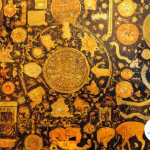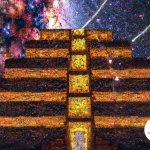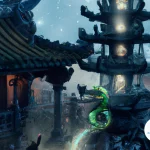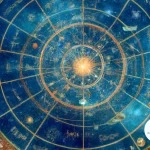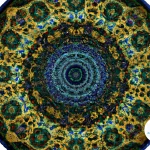Welcome to the intriguing world of Aztec astrology! In this article, we will delve into the fascinating beliefs and practices of ancient Aztec astrologers. The Aztecs, known for their advanced civilization and intricate belief system, placed great importance on astrology. They believed that the movement of celestial bodies held profound meaning and influence over human lives. By examining the cosmology, zodiac, and astrological practices of the Aztecs, we can gain insight into their unique perspective on the universe and its connection to human existence. Join us as we explore the mystical world of Aztec astrology and uncover the secrets and wisdom of these ancient astrologers.
The Importance of Astrology in Aztec Culture
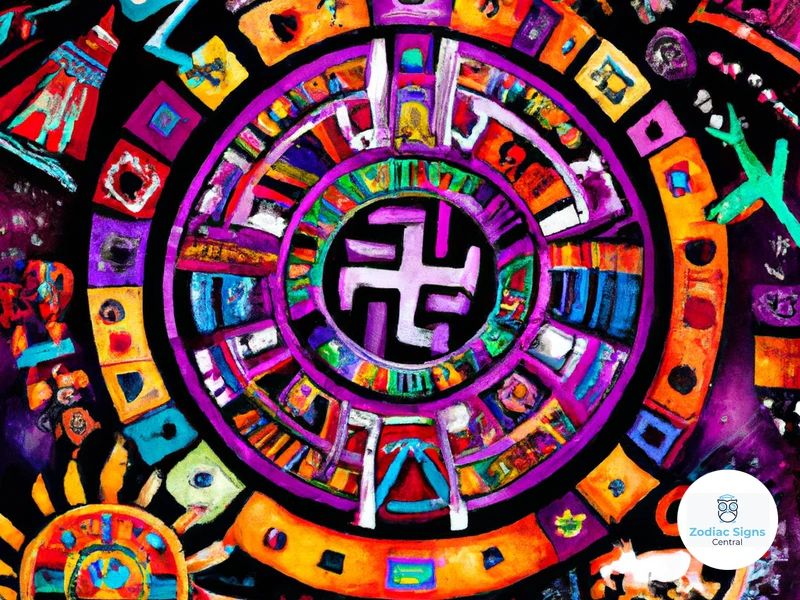
The Importance of Astrology in Aztec Culture can hardly be overstated. For the Aztecs, astrology was not just a means of understanding the movements of the celestial bodies, but a complex system that held profound significance in their daily lives. Aztec cosmology revolved around the belief that the Sun, Moon, planets, and stars were divine entities with the power to shape human destiny. The Aztecs believed that the heavens reflected the cyclical nature of life and that by interpreting celestial events, such as eclipses or the alignment of planets, they could gain insight into the future and make informed decisions. Astrology played a vital role in important decisions such as determining the most favorable times for planting crops, going to war, or conducting religious ceremonies. It influenced everything from personal relationships to political strategies. Astrologers were highly respected members of Aztec society, revered for their ability to tap into the cosmic wisdom and provide guidance to individuals and the community as a whole. The deep-rooted belief in astrology highlights the profound connection that the Aztecs felt with the cosmos and their unwavering faith in the power of celestial forces to shape their lives.
Aztec Cosmology and Astrology
Aztec Cosmology and Astrology were deeply intertwined, as the Aztecs believed that the cosmos held the key to understanding the nature of existence and the interconnectedness of all things. According to Aztec cosmology, the universe was divided into layers or realms, each inhabited by different gods and celestial beings. At the center of their cosmology was the concept of the “Axis Mundi,” a central pillar that connected the heavens, Earth, and the underworld. This axis was believed to be the cosmic backbone of the universe and played a crucial role in Aztec astrology. The Aztecs believed that the alignment of celestial bodies, such as the Sun, Moon, and planets, along this axis influenced the flow of energy and cosmic forces. They observed the movements of the celestial bodies meticulously and interpreted them as messages from the gods. The Aztec priests and astrologers developed a sophisticated calendar system to track these alignments and predict future events. This calendar system, known as the tonalpohualli, consisted of 260 days and provided a framework for their astrological interpretations. It linked each day to a combination of a number and a sacred nahual, or animal spirit, which carried specific meanings and qualities. This intricate cosmological understanding allowed the Aztecs to navigate their lives with a deep sense of connection to the celestial realms and the guiding influence of the gods. Their astrological interpretations influenced various aspects of Aztec culture, from religious rituals and ceremonies to personal decision-making and daily activities. The Aztec Cosmology and Astrology served as a spiritual compass, guiding them in their pursuit of harmony and balance with the cosmos and the gods they revered.
Aztec Zodiac and Its Symbolism
The Aztec Zodiac and Its Symbolism held great significance in Aztec astrology. Unlike the Western zodiac, which is based on twelve constellations, the Aztec zodiac consisted of twenty day signs, known as “day lords.” Each day lord represented a unique energy or characteristic, and individuals born under a specific day lord were believed to possess its qualities. The day signs varied from animals like the jaguar, snake, and monkey, to natural elements such as wind, water, and flower. Each sign had its own symbolism and associated traits, providing a framework for understanding an individual’s personality, strengths, and weaknesses. These symbols were deeply integrated into every aspect of Aztec culture, from art and architecture to ceremonies and rituals. For example, the jaguar symbolized power and royalty, and individuals born under this sign were believed to possess leadership qualities. The monkey, on the other hand, represented mischief and creativity. The Aztec zodiac played a vital role in determining compatibility, personal characteristics, and even the best times for important life events such as marriage or starting a business. Understanding the symbolism of the Aztec zodiac allows us to appreciate how the ancient Aztecs perceived the interconnectedness between humans and celestial forces.
The Role of Astrologers in Aztec Society
In Aztec society, astrologers held a pivotal role and were revered for their ability to interpret the celestial messages and guide individuals and the community as a whole. Known as “tlacatecuhtli,” meaning “lord or guardian of knowledge,” astrologers were highly respected and consulted for important decisions. They were considered intermediaries between the divine and human realms, bridging the gap between the physical and spiritual worlds. Astrologers were trained in the complex art of interpreting celestial events, calculating birth charts, and understanding the intricate Aztec calendar system. Their expertise was sought after in various areas of life, including agriculture, warfare, politics, and personal matters. Astrologers played a crucial role in determining the most auspicious times for planting and harvesting crops, ensuring the success of agricultural endeavors. They also advised Aztec rulers on matters of state, providing insight into the potential outcomes of military campaigns and political alliances. Individuals sought the guidance of astrologers for personal matters, such as choosing a suitable partner or making important life decisions. Astrologers were known to possess deep knowledge of the stars, planets, and their alignments, helping individuals navigate the complexities of their lives. Their wisdom and guidance were highly valued, and the role of astrologers in Aztec society was integral to the functioning of the community as a whole. Thus, astrologers held a respected and revered position, offering their expertise to shape the course of individual lives and the destiny of the Aztec civilization itself.
Aztec Astrological Beliefs
Aztec Astrological Beliefs were centered around the idea that there existed a profound connection between celestial bodies and human lives. The Aztecs believed that each celestial entity, such as the Sun, Moon, and planets, had its own unique energy and influence on earthly events. They believed that the gods used these celestial bodies as a means of communication with humans and that by understanding their movements, they could decipher messages and gain insight into the future. Divination and prophecy played a significant role in Aztec astrology, as astrologers would interpret signs and omens from celestial events to guide individuals and the community. The Aztecs also believed in the concept of a personal birth chart, similar to modern horoscopes, which assigned specific traits, strengths, and weaknesses based on the alignment of celestial bodies at the time of an individual’s birth. The Aztec calendar, known as the tonalpohualli, served as a crucial tool in astrology, as each day was associated with a specific deity and its corresponding energies. By understanding the interplay between the celestial and earthly realms, the Aztecs sought to navigate and harness the cosmic forces for the betterment of their lives and society as a whole.
Divination and Prophecy
A central aspect of Aztec astrology was divination, a practice through which astrologers sought to gain insight and predict future events. Divination methods varied, but one popular technique involved the use of maguey thorns that were thrown onto a special tray. Astrologers would then interpret the pattern formed by the thorns, associating certain symbols with specific outcomes. Another divination method involved reading the Aztec calendar, which was intricately tied to astrology. By studying the positions of celestial bodies and their alignment with the calendar, astrologers could make predictions about the future. Eighth House astrology played a significant role in divination as well, offering insights into hidden aspects of a person’s life and potential challenges they may face.
Prophecy was another essential aspect of Aztec astrology. Prophecies, often communicated by the priestly class, were seen as messages from the gods and held great weight in decision-making. These prophecies involved interpreting celestial events, such as comets or unusual planetary alignments, as signs of upcoming significant events or shifts in power. Aztecs believed that by understanding these celestial messages, they could prepare and navigate the challenges and opportunities that lay ahead. Prophecy provided guidance not only for individuals but also for rulers and their strategic decisions for the empire as a whole.
Aztec Astrological Practices
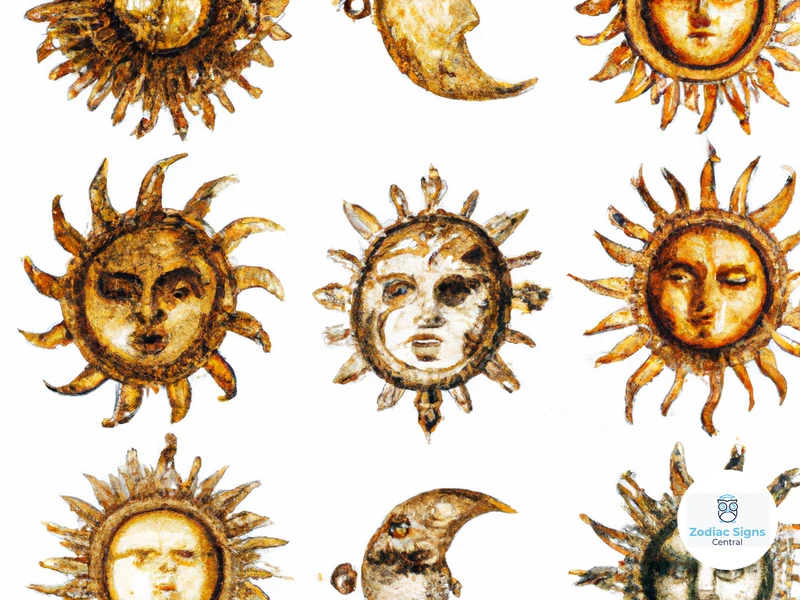
Aztec Astrological Practices were diverse and encompassed various rituals and observances. Aztec astrologers created Aztec Horoscopes and Birth Charts for individuals based on their birth dates and the alignment of celestial bodies at the time of their birth. These charts were used to determine personality traits, strengths, weaknesses, and potential life paths. To accurately determine the celestial events, the astrologers relied on Celestial Observatories and Temples, which were dedicated spaces for studying the movements of celestial bodies. These observatories were strategically built to align with specific astronomical phenomena, allowing the astrologers to make precise observations. During important celestial events, such as eclipses or planetary alignments, the Aztecs performed rituals and made offerings to the Gods as a way to seek blessings, protection, and guidance. These offerings often included precious items like gold, jade, and cacao beans. The astrologers would interpret these celestial events and provide counsel to the rulers and individuals. The practices of Aztec astrology were deeply intertwined with religious beliefs and the natural world, forming a comprehensive approach to understanding and navigating life based on celestial influences.
Aztec Horoscopes and Birth Charts
In Aztec culture, Aztec horoscopes and birth charts held great significance in understanding an individual’s personality, destiny, and relationship with the celestial realm. Aztec astrologers used a complex system to create these horoscopes and birth charts, taking into account various factors such as the positions of the Sun, Moon, and planets at the time of a person’s birth. These charts provided detailed insights into a person’s strengths, weaknesses, and potential life paths. Each day in the Aztec calendar was associated with a specific deity and had its own unique characteristics, which influenced the personality traits of individuals born on that day. Aztec horoscopes also included information about personal qualities, career paths, and potential challenges that individuals may face throughout their lives. The accuracy of these horoscopes was believed to be crucial for making informed decisions and gaining a deeper understanding of oneself. By consulting these horoscopes and birth charts, individuals could align their actions with the cosmic forces and navigate their lives accordingly. It is fascinating to see how Aztec astrology utilized these personalized horoscopes and birth charts to provide individuals with a deeper sense of purpose and connection to the celestial world.
Celestial Observatories and Temples
Celestial Observatories and Temples played a crucial role in the practice of Aztec astrology. These architectural marvels were specifically designed to align with celestial events and provide a vantage point for observing the movements of the stars and planets. The Aztecs believed that certain celestial events held great significance and could offer insights into future events and the will of the gods. One remarkable example of a celestial observatory is the Templo Mayor in Tenochtitlán, the capital of the Aztec empire. This pyramid-like structure was not only a religious center but also served as an astronomical observatory. The alignment and orientation of the Templo Mayor were carefully designed to mark significant events such as equinoxes and solstices. Aztec astrologers would climb to the top of these observatories to make observations and calculations that would assist in predicting celestial events and interpreting their meanings. The meticulous construction of celestial observatories and temples demonstrates the immense importance the Aztecs placed on accurately tracking and understanding celestial phenomena. These structures acted as a bridge between the earthly realm and the celestial realm, enabling the Aztecs to commune with the gods and decipher the messages conveyed by the stars and planets.
Rituals and Offerings to the Gods
Rituals and offerings were an integral part of Aztec astrology and their religious practices. The Aztecs believed that by performing specific rituals and making offerings to the gods, they could establish a connection with the divine and seek their favor. Astrologers guided these rituals, ensuring that they were conducted at the most auspicious times based on celestial events and astrological calculations. These rituals often involved elaborate ceremonies, purification rituals, and sacrifices. Sacrifices were seen as acts of great devotion and were offered to various gods associated with different celestial bodies. The Aztecs believed that by offering the gods blood and other valuable objects, they maintained the cosmic balance and ensured the continuity of life. These offerings were made in temples, which also served as celestial observatories for tracking the movement of the stars and planets. The rituals and offerings were meant to not only please the gods but also to seek their guidance and protection. They were a way for the Aztecs to align themselves with the cosmic forces and maintain harmony within their society. The importance placed on rituals and offerings in Aztec astrology showcases the deep spiritual connection that the Aztecs had with the celestial realm and their belief in the interplay between the divine and human existence.
Aztec Astrology Versus Western Astrology
Aztec Astrology Versus Western Astrology showcases the distinct characteristics and differences between these two astrological systems. While both share a common foundation of interpreting celestial movements, Aztec astrology has its unique elements that set it apart from its Western counterpart. One of the significant differences lies in the zodiac systems. In Western astrology, the zodiac is divided into twelve signs, representing different personality traits and characteristics. However, in Aztec astrology, the zodiac is divided into eight signs, each associated with a specific day. Additionally, Aztec astrology places a strong emphasis on the connection between celestial bodies and natural elements, such as animals, plants, and natural phenomena. This connection allows for a deeper understanding of an individual’s personality and fate. Whereas Western astrology often focuses on individual horoscopes and personal traits, Aztec astrology places equal importance on the collective fate of a community or society. It seeks to understand and interpret the impact of celestial events on a larger scale. The differences between Aztec and Western astrology highlight the diverse ways in which cultures interpret and interact with the celestial realm, offering a fascinating comparison for anyone interested in exploring the vast field of astrology.
The Unique Elements of Aztec Astrology
The Unique Elements of Aztec Astrology set it apart from other astrological traditions. One significant aspect is the Aztec zodiac, which consists of 20 day signs known as “Tonalpohualli.” Each sign is associated with a specific deity or natural element and carries its own distinct qualities and symbolism. These day signs were believed to influence a person’s personality traits and destiny. Another unique element is the Aztec calendar, known as the “Tzolkin,” which combines a 260-day ritual calendar with a 365-day solar calendar. This intricate calendar system allowed Aztec astrologers to make detailed predictions and interpretations based on the interplay of these two calendars. Additionally, the Aztecs placed great importance on the concept of cyclical time, viewing history and events as repeating patterns rather than linear progression. This cyclic view of time influenced their understanding of astrology and the belief that celestial events would recur in a predictable manner. The Aztecs also practiced divination and prophecy as integral components of their astrological traditions. They believed that by communing with the gods and interpreting signs and omens, they could gain insight into the future and make informed decisions. These unique elements of Aztec astrology demonstrate the depth and complexity of their astrological beliefs, setting them apart from other ancient and modern astrological practices.
Similarities and Differences with Western Astrology
When examining the Similarities and Differences with Western Astrology, it becomes evident that while both systems share some fundamental concepts, there are notable distinctions in their approach and interpretations. Like Western astrology, Aztec astrology is concerned with the influence of celestial bodies on human lives. Both systems recognize the significance of the Sun, Moon, and planets. However, Aztec astrology places greater emphasis on the sacredness of specific days and cycles within their calendar system, such as the 260-day Sacred Round or the 365-day Solar Year. Another key difference lies in the zodiac signs. While Western astrology has twelve familiar zodiac signs, Aztec astrology has twenty day signs, each representing a combination of a number and a specific deity. Additionally, Aztec astrology focuses on four cardinal directions and their corresponding cosmic forces, known as the “tezcatlipocas,” whereas Western astrology centers on the four elements. Despite these divergences, both systems share the belief in the interconnectedness of celestial and human realms and the influence of planetary movements. While Western astrology has evolved and adapted over time, Aztec astrology remains a unique and cherished tradition that offers a fascinating perspective on the cosmos and human existence.
Aztec Astrology in Modern Times
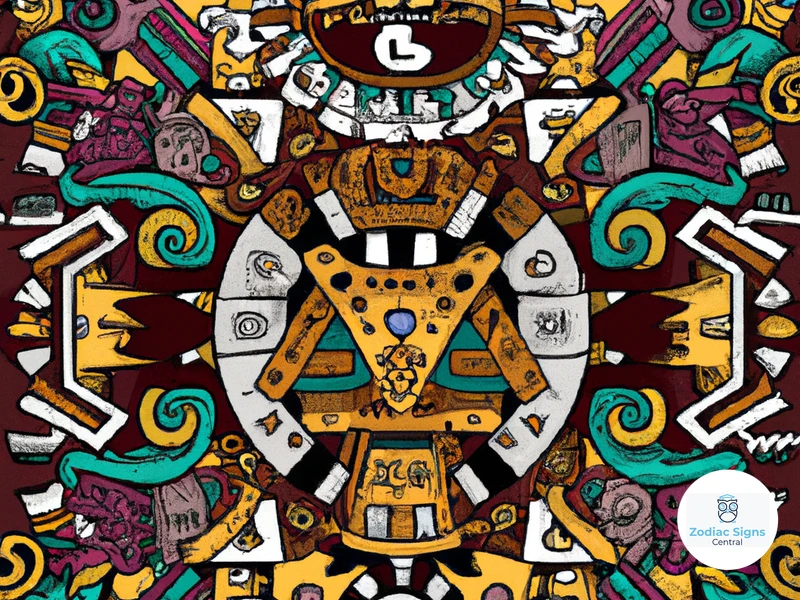
Aztec Astrology in Modern Times is a subject that has gained renewed interest and popularity. While the ancient Aztec civilization may have fallen, the wisdom and knowledge of their astrological practices have not been entirely lost. In fact, there has been a revival of Aztec astrology in contemporary times. Modern Aztec astrologers study the ancient texts and artifacts that have survived and seek to understand and interpret the cosmic wisdom passed down by their ancestors. This revival has led to the development of contemporary Aztec astrological practices that blend traditional Aztec beliefs with modern astrology techniques. Today, individuals interested in Aztec astrology can consult with knowledgeable practitioners who offer personalized horoscopes and birth chart readings based on Aztec principles. These readings may consider not only the positions of celestial bodies but also incorporate the symbolism and interpretations specific to Aztec astrology. While Aztec astrology in modern times may not be as widely practiced as Western astrology, it provides a unique perspective and insight into the cosmic forces that shape our lives. With its rich symbolism and ancient wisdom, Aztec astrology continues to serve as a fascinating alternative for those seeking a deeper understanding of themselves and their place in the universe.
The Legacy of Aztec Astrology
The Legacy of Aztec Astrology continues to captivate and inspire individuals to this day. Despite the decline of the Aztec civilization, their astrological beliefs and practices have left a lasting impact on the world. The Aztecs’ intricate understanding of celestial movements and their connection to human lives have influenced subsequent astrological traditions. While many of the original Aztec texts and knowledge were lost during the Spanish conquest, some fragments have survived, allowing modern scholars to piece together the foundations of Aztec astrology. The legacy of Aztec astrology can also be seen in the continued interest and fascination with Mesoamerican civilizations, including the Aztecs. Today, there are individuals who study and practice Aztec astrology, integrating its principles with other astrological traditions. These modern interpretations strive to honor the rich cultural heritage of the Aztecs while adapting to contemporary contexts. The enduring legacy of Aztec astrology serves as a testament to its enduring wisdom and its ability to resonate with people seeking a deeper understanding of themselves and their place in the cosmos. Whether one chooses to explore Aztec astrology or incorporates elements of it into their astrological practice, its legacy remains a captivating thread in the tapestry of human history.
Revival and Contemporary Aztec Astrological Practices
Revival and Contemporary Aztec Astrological Practices have experienced a resurgence in recent years as people seek to reconnect with ancient wisdom and traditions. While Aztec civilization may have declined centuries ago, the rich astrological heritage of the Aztecs continues to inspire and captivate modern enthusiasts. Today, there are individuals who study and practice Aztec astrology, drawing upon historical texts and archaeological discoveries to revive and adapt the ancient astrological techniques. These contemporary Aztec astrologers offer horoscope readings, birth chart interpretations, and astrological guidance, incorporating traditional Aztec symbolism and beliefs into their practice. They recognize the significance of the Aztec calendar, with its intricate cycles and sacred days, and incorporate it into their readings. Additionally, there is a growing interest in the spiritual and metaphysical aspects of Aztec astrology, as people explore the connections between cosmic forces and personal growth. While these modern interpretations may not mirror the exact practices of ancient Aztec astrologers, they serve as a tribute to the enduring relevance and appeal of Aztec astrology in our ever-evolving world.
Conclusion
In Conclusion, the ancient Aztec astrological beliefs and practices offer us a window into a rich and intricate belief system. Astrology held immense importance in Aztec culture, where the movements of celestial bodies were seen as interconnected with human lives. The Aztecs believed that astrology could provide insight into the future, guide decision-making, and connect individuals to the divine. The legacy of Aztec astrology continues to intrigue and inspire people today, with a revival of interest in incorporating Aztec astrological practices into modern life. While the Aztec astrological system differs in some aspects from Western astrology, such as the unique elements of Aztec astrology and its emphasis on rituals and offerings to the gods, there are also similarities and shared principles between the two. As we explore the wonders of Aztec astrology, we gain a deeper appreciation for the profound connection between the cosmos and human existence. Whether one follows Aztec astrology or Western astrology, the pursuit of understanding celestial influences on our lives remains a timeless endeavor that continues to captivate and guide us.
Frequently Asked Questions
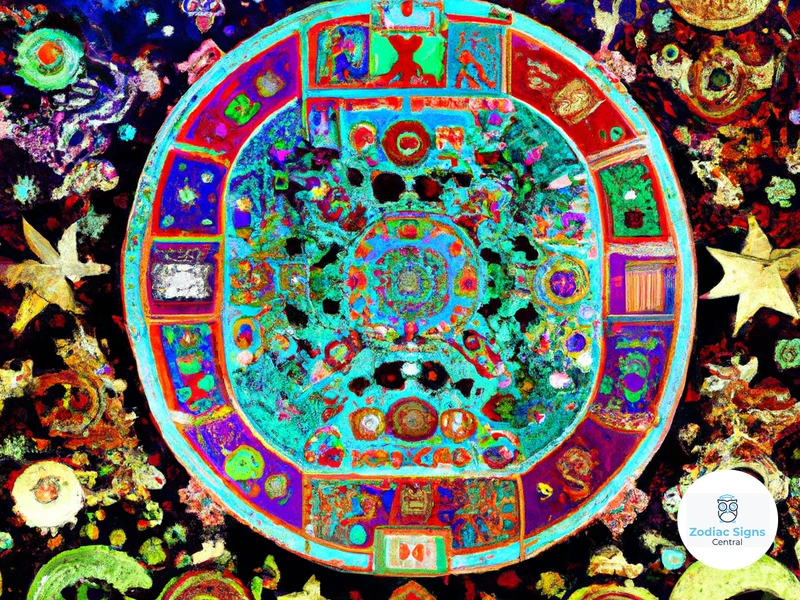
FAQs about Aztec Astrology
1. What is the basis of Aztec astrology?
Aztec astrology is based on the belief that celestial bodies such as the Sun, Moon, and planets have a profound influence on human lives and the events that unfold on Earth. The movements and alignments of these celestial bodies were seen as messages from the gods, which astrologers interpreted to predict the future and guide decision-making.
2. Did the Aztecs have a zodiac system?
Yes, the Aztecs did have a zodiac system. Their zodiac consisted of 20 different symbols, each representing a specific day in their calendar. These symbols were associated with different deities and had their own unique interpretations and characteristics.
3. Were Aztec astrologers considered religious figures?
Yes, Aztec astrologers held a sacred role in society. They were revered as religious figures who had the ability to communicate with the gods and interpret celestial messages. Their insights and guidance were sought after by individuals, rulers, and priests alike.
4. Did the Aztecs use birth charts?
Yes, the Aztecs used birth charts to determine an individual’s astrological profile. These birth charts took into account the date and time of birth and were used to reveal insights into a person’s personality traits, strengths, weaknesses, and potential future events.
5. Were rituals and offerings a part of Aztec astrology?
Absolutely. Rituals and offerings played a significant role in Aztec astrology. Astrologers would often perform ceremonies and offer sacrifices to appease the gods and seek their favor. These rituals were believed to strengthen the connection between the celestial and earthly realms and ensure positive outcomes.
6. How does Aztec astrology differ from Western astrology?
Aztec astrology differs from Western astrology in many ways. While Western astrology focuses on a 12-sign zodiac system, Aztec astrology has 20 symbols representing days. Additionally, Aztec astrology places a strong emphasis on deities and their associated characteristics, unlike the more general and planetary-based approach of Western astrology.
7. Are there any similarities between Aztec astrology and Western astrology?
Yes, there are a few similarities between Aztec astrology and Western astrology. Both systems emphasize the influence of celestial bodies on human lives, and both seek to provide guidance and insight into personal traits and future events. However, the cultural context and specific interpretations differ significantly.
8. Is Aztec astrology still practiced today?
While Aztec civilization no longer exists, some elements of Aztec astrology are still practiced today, primarily by indigenous communities in Mexico. There has been a revival of interest in Aztec astrology, as people seek to reconnect with their ancient heritage and explore alternative forms of astrology.
9. Can Aztec astrology be combined with other astrological systems?
Yes, it is possible to combine Aztec astrology with other astrological systems. Many individuals who follow Western astrology may incorporate elements of Aztec astrology into their practice to gain a more comprehensive understanding of their astrological profile and broaden their perspectives on celestial influences.
10. What is the legacy of Aztec astrology?
The legacy of Aztec astrology lies in its profound influence on Aztec culture, spirituality, and decision-making processes. It serves as a testament to the rich and complex belief system of the Aztec civilization and continues to intrigue and inspire individuals interested in exploring diverse astrological traditions.
References
Frequently Asked Questions

1. How did astrology impact the daily lives of the ancient Aztecs?
Astrology played a significant role in the daily lives of the ancient Aztecs. They believed that celestial bodies influenced various aspects of human life, including personality traits, relationships, and even the auspiciousness of certain activities.
2. What were the main elements of Aztec cosmology and astrology?
Aztec cosmology and astrology were centered around the belief that the universe was divided into different celestial realms, each associated with specific deities and energies. These realms were represented by the Aztec calendar, which was deeply intertwined with their astrological practices.
3. How did Aztec astrologers interpret the symbolism of the Aztec zodiac?
Aztec astrologers interpreted the symbolism of the Aztec zodiac by examining the characteristics and traits associated with the different animal signs. Each sign had unique attributes that were believed to influence the individuals born under them.
4. What was the role of astrologers in Aztec society?
Astrologers held a revered position in Aztec society. They were spiritual guides and advisors who used their knowledge of astrology to provide insights into various aspects of life, including decisions, relationships, and even political matters.
5. What were the methods of divination and prophecy used by Aztec astrologers?
Aztec astrologers used various methods of divination and prophecy, including observing celestial omens, interpreting dreams, and performing complex rituals with the use of sacred objects and tools. These methods were believed to reveal insights into the future.
6. How did the Aztec calendar relate to astrology?
The Aztec calendar played a crucial role in Aztec astrology. It was a complex system that intertwined their understanding of celestial movements, astrological symbolism, and the cycles of time. The calendar helped astrologers determine auspicious times for various activities and events.
7. What were the components of an Aztec horoscope or birth chart?
An Aztec horoscope or birth chart included information about an individual’s date and time of birth. Astrologers would analyze this data to determine the positions of celestial bodies at the time of birth and draw insights about the person’s personality, strengths, and weaknesses.
8. What were celestial observatories and temples used for in Aztec astrology?
Celestial observatories and temples were essential tools for Aztec astrologers. They were used to observe and track the movements of celestial bodies, as well as to perform rituals and ceremonies dedicated to the celestial deities. These structures were considered sacred places of connection between humans and the cosmos.
9. What kind of rituals and offerings did the Aztecs perform for astrological purposes?
The Aztecs performed various rituals and offerings to the gods for astrological purposes. These rituals involved chanting, dance, and symbolic gestures, along with the presentation of food, flowers, and other offerings. The intention was to seek the favor and guidance of the celestial deities.
10. How does Aztec astrology differ from Western astrology?
Aztec astrology differs from Western astrology in several ways. While both systems use celestial bodies for interpretation, Aztec astrology places a stronger emphasis on the cycles of time and the connection between humans and the cosmos. It also has its unique animal zodiac symbols and associated meanings.
References
- Master of the Stars: Aztec astronomy
- The Fascinating World of Aztec Astronomy
- The legacy of Aztec astronomy

